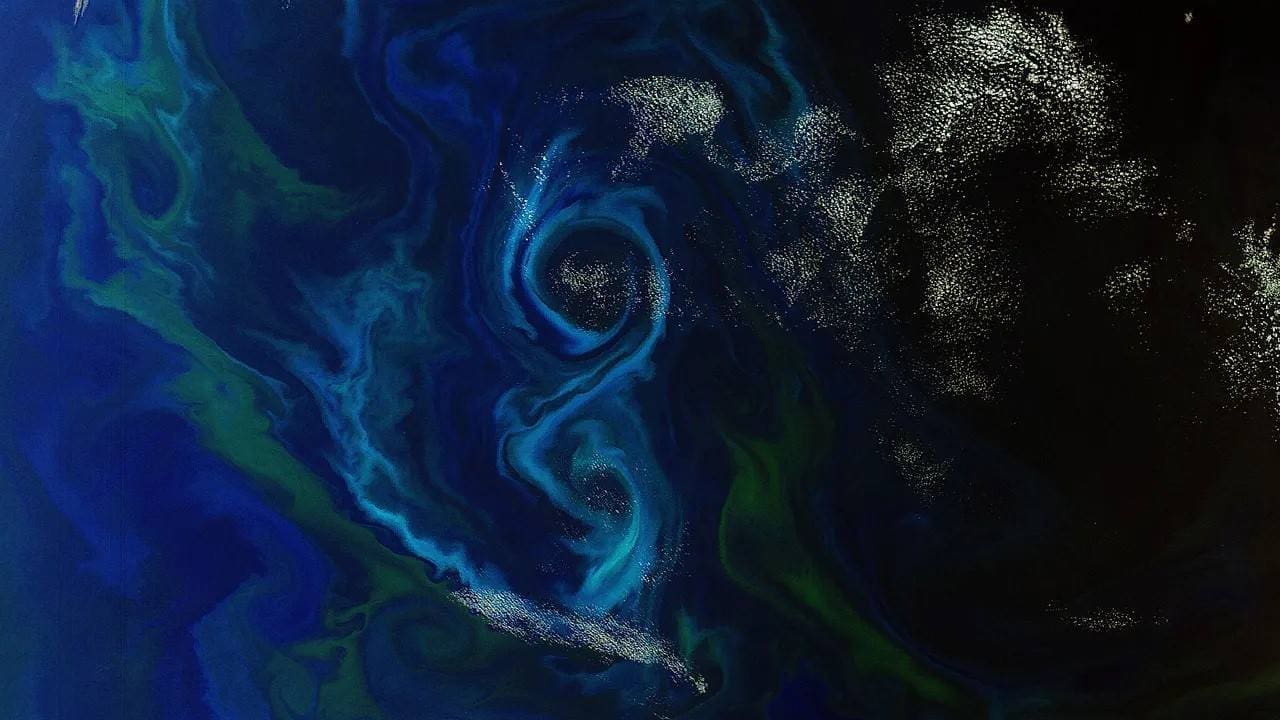Summary:
Marine plankton, microscopic organisms that form the base of ocean food webs, adapt to changing ocean conditions by modifying their cellular lipids, according to new research published in Science Advances. The international study, led by scientists from MARUM – Center for Marine Environmental Sciences at the University of Bremen and the Woods Hole Oceanographic Institution, reveals how lipid composition in plankton shifts across different marine environments.
By reanalyzing over 200 GB of mass spectrometry data from 930 ocean samples, the team identified 16 distinct lipid clusters that respond to environmental conditions such as temperature, light, and nutrient availability. Using data science techniques like weighted correlation network analysis, the researchers uncovered patterns that had remained hidden in earlier studies. In polar oceans, for instance, plankton adapt to cold by shortening fatty acid chains, maintaining cell membrane fluidity. In tropical and subtropical surface waters, they rely more on non-phosphorus lipids, potentially as a response to nutrient scarcity. Meanwhile, in deeper, dimmer waters, they boost production of unsaturated fatty acids, an adaptation to low-light environments.
“This study shows the value of open science,” said lead author Dr. Weimin Liu. “Using new methods on open-access data, we uncovered previously hidden patterns of plankton adaptation.”

How marine plankton adapts to a changing world
The study, a collaboration between MARUM – Center for Marine Environmental Sciences at the University of Bremen and the Woods Hole Oceanographic Institution (WHOI), reanalyzed massive datasets of large-scale distributions of plankton-derived lipids in the ocean, which were initially published by WHOI in 2022. “This study shows the value of open science,” says first author Dr. Weimin Liu from MARUM. “Using new methods on open-access data, we uncovered previously hidden patterns of plankton adaptation.”
The datasets, totaling over 200 GB of mass spectrometry data, include lipid profiles — key components of cell membranes — from 930 samples collected across the Atlantic, Pacific, and Arctic Oceans, at depths from the surface down to 400 meters. Unlike traditional approaches that focus only on known molecules, this study also included unknown lipids using network analysis, letting the data speak for themselves. This approach allowed a more comprehensive and less biased view of lipid diversity in marine plankton.
The analysis showed that plankton lipid profiles are closely linked to their environment. The numerically highest lipid diversity was found in cold polar and subpolar oceans, where plankton use a wider range of strategies — such as shortening fatty acid chains — to keep their cell membranes fluid. In warmer open oceans, the team observed shifts in lipid distribution that likely reflect adaptations to low nutrient availability. In deeper waters of these regions, plankton increased the production of unsaturated fatty acids, a strategy that may reflect a response to low light conditions.
“These changes in lipids reveal how plankton communities adapt to their surroundings,” says Dr. Liu. “Since plankton, especially phytoplankton, form the base of ocean ecosystems, their responses can ripple through the entire marine food web and lead to far-reaching, sometimes unexpected, consequences.”
This research demonstrates how combining environmental lipidomics with data science can uncover the mechanisms behind plankton adaptation — offering new insight into how marine ecosystems function. The research is benefitted from the establishment of cheminformatics expertise within the Cluster of Excellence “The Ocean Floor – Earth’s Uncharted Interface” based at MARUM.
Journal Reference:
W. Liu, H. C. Holm, J. S. Lipp, H. F. Fredricks, B. A. Van Mooy, K. U. Hinrichs, ‘Unraveling plankton adaptation in global oceans through the untargeted analysis of lipidomes’, Science Advances 11, 21: eads4605 (2025). DOI: 10.1126/sciadv.ads4605
Article Source:
Press Release/Material by MARUM – Center for Marine Environmental Sciences | University of Bremen
Featured image: In this Envisat image, a phytoplankton bloom swirls a figure-of-8 in the South Atlantic Ocean about 600 km east of the Falkland Islands (2 December 2011). Credit: ESA




